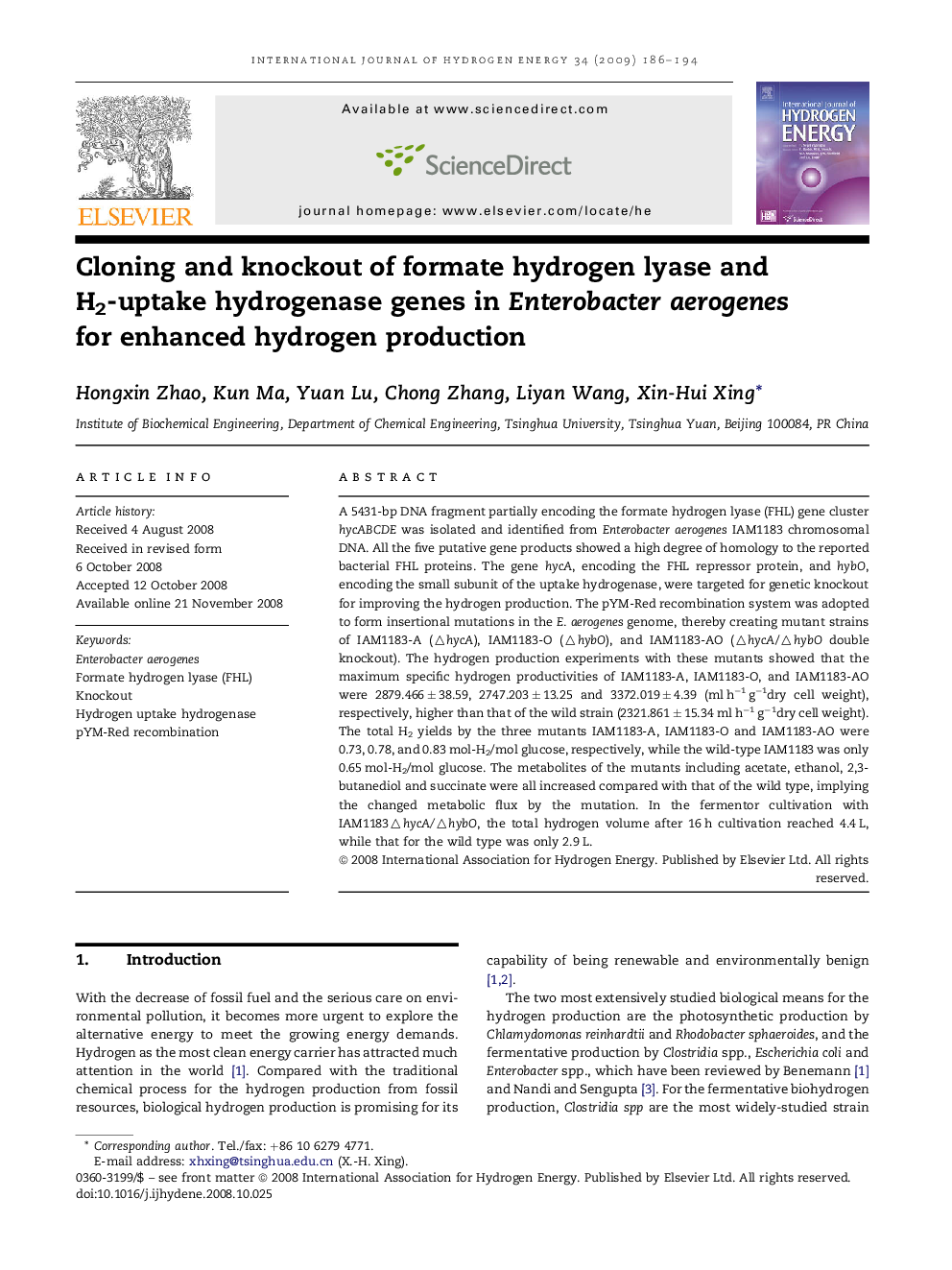| Article ID | Journal | Published Year | Pages | File Type |
|---|---|---|---|---|
| 1278063 | International Journal of Hydrogen Energy | 2009 | 9 Pages |
A 5431-bp DNA fragment partially encoding the formate hydrogen lyase (FHL) gene cluster hycABCDE was isolated and identified from Enterobacter aerogenes IAM1183 chromosomal DNA. All the five putative gene products showed a high degree of homology to the reported bacterial FHL proteins. The gene hycA, encoding the FHL repressor protein, and hybO, encoding the small subunit of the uptake hydrogenase, were targeted for genetic knockout for improving the hydrogen production. The pYM-Red recombination system was adopted to form insertional mutations in the E. aerogenes genome, thereby creating mutant strains of IAM1183-A (△hycA), IAM1183-O (△hybO), and IAM1183-AO (△hycA/△hybO double knockout). The hydrogen production experiments with these mutants showed that the maximum specific hydrogen productivities of IAM1183-A, IAM1183-O, and IAM1183-AO were 2879.466 ± 38.59, 2747.203 ± 13.25 and 3372.019 ± 4.39 (ml h−1 g−1dry cell weight), respectively, higher than that of the wild strain (2321.861 ± 15.34 ml h−1 g−1dry cell weight). The total H2 yields by the three mutants IAM1183-A, IAM1183-O and IAM1183-AO were 0.73, 0.78, and 0.83 mol-H2/mol glucose, respectively, while the wild-type IAM1183 was only 0.65 mol-H2/mol glucose. The metabolites of the mutants including acetate, ethanol, 2,3-butanediol and succinate were all increased compared with that of the wild type, implying the changed metabolic flux by the mutation. In the fermentor cultivation with IAM1183△hycA/△hybO, the total hydrogen volume after 16 h cultivation reached 4.4 L, while that for the wild type was only 2.9 L.
